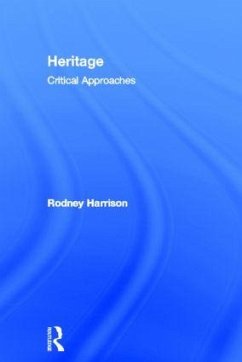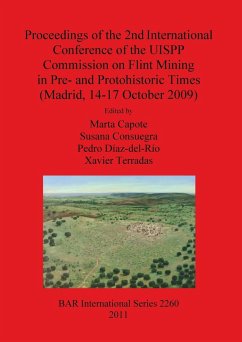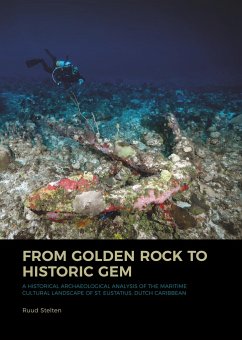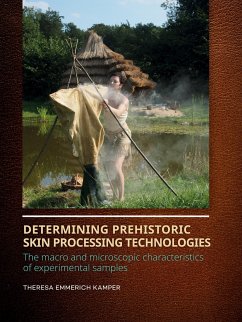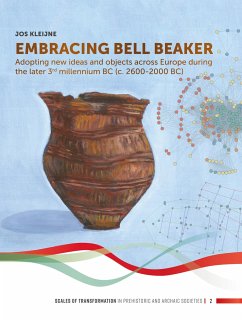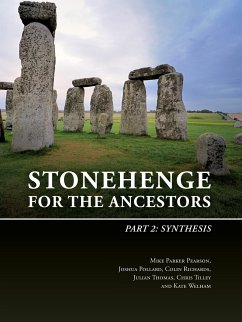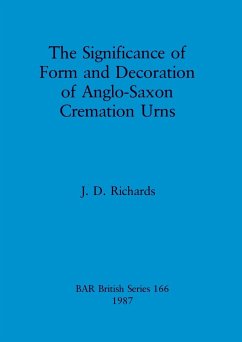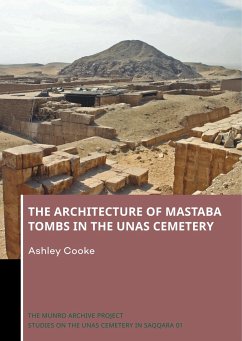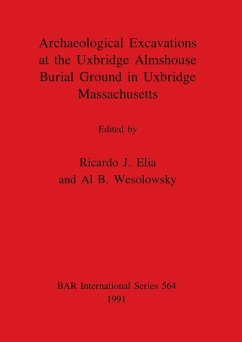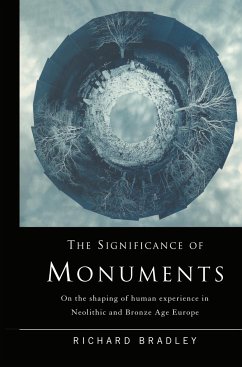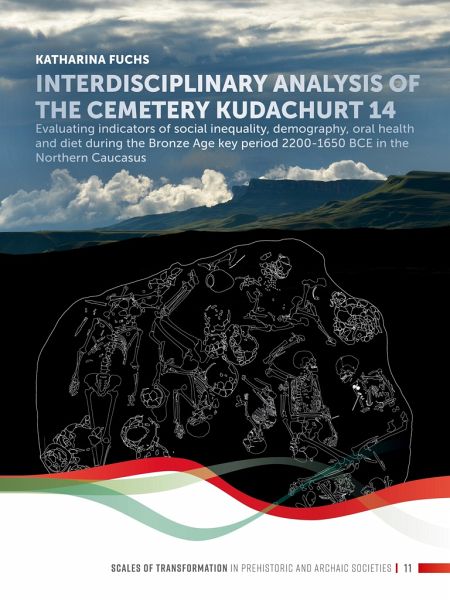
Interdisciplinary analysis of the cemetery Kudachurt 14

PAYBACK Punkte
63 °P sammeln!
Representing both a barrier and a corridor between the Eurasian and Asian continents, the Caucasus has constituted the setting for various socio-economic transformations throughout prehistory. The transition from the Middle to the Late Bronze Age in the Northern Caucasus is a period characterised by a shift from pastoral lifeways in the steppe to sedentary lifestyles in the high mountains, and the change from hierarchical to egalitarian societies. In this context, this book provides basic scientific research on social inequality, demography, oral health, and diet of humans that lived between 2...
Representing both a barrier and a corridor between the Eurasian and Asian continents, the Caucasus has constituted the setting for various socio-economic transformations throughout prehistory. The transition from the Middle to the Late Bronze Age in the Northern Caucasus is a period characterised by a shift from pastoral lifeways in the steppe to sedentary lifestyles in the high mountains, and the change from hierarchical to egalitarian societies. In this context, this book provides basic scientific research on social inequality, demography, oral health, and diet of humans that lived between 2200-1650 BCE in the central North Caucasian foothills. Due to the outstanding preservation of its archaeological and human remains, the cemetery Kudachurt 14 represents a hitherto missing link for a transformative period in this region.Archaeologically, the heterogeneity of the burial remains appears as a melting pot of different cultural phenomena, but showing strong typological affiliationto the so-called North Caucasian culture of the high mountain area. Furthermore, biological and ritual evidence confirms often-stated gender concepts and expression of differences in social status. Individuals suffered from poor oral health due to the occupational use of their teeth and high caries prevalence occurred among both adolescents and adults. Together with information from C and N stable isotopes, the data provide evidence for early agricultural practices in a mixed subsistence economy. While social inequality is prominent in the burial context, it is not displayed in oral health and dietary trends. This indicates rather similar living conditions for individuals from different socio-ritual statuses.The presented doctoral research delivers the first comprehensive data collection and investigation that combines burial, osteological, palaeopathological, and stable isotope information, and achieves a connection between the living and the dead in this time and placeContentsPART I: BACKGROUND AND OBJECTIVES OF RESEARCH1. Introduction2. Questions of research and methodological approach3. The cemetery of Kudachurt 14PART II: DISCIPLINARY ANALYSES: BURIAL PRACTICE, HUMAN REMAINS AND ISOTOPES4. Burial practice: Social indicators5. Human remains: Demography and oral health6. Carbon and nitrogen stable isotopes: Palaeodietary reconstructionPART III: INTERDISCIPLINAR SYNTHESIS AND CONCLUSION7. Interdisciplinary synthesis: Burial practice, human remains, and stable isotopes8. Conclusions9. Short summary10. Kurzzusammenfassung11. 12. References13. Tables, figures and abbreviationsPART IV: ONLINE DATA: CATALOGUE AND APPENDIX14. Appendix15. Grave catalogue16. Item plate catalogue17. Database



